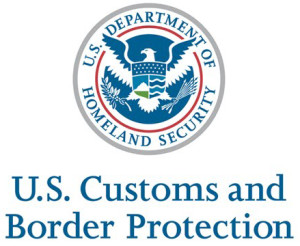 Last week, President Obama signed the Trade Enforcement and Trade Facilitation Act of 2015 into law. It made news primarily due to the provisions allowing Customs to block entry of goods made by slave labor, but readers of this blog might also be interested in the section on trademark and copyright enforcement. The bill requires customs officers to share information with rightholders upon suspicion that an import is infringing, it allows the seizure of anti-circumvention tools, and it sets up a new IPR “Coordination Center” within Immigration and Customs Enforcement. There are also coordination, reporting and training requirements.
Last week, President Obama signed the Trade Enforcement and Trade Facilitation Act of 2015 into law. It made news primarily due to the provisions allowing Customs to block entry of goods made by slave labor, but readers of this blog might also be interested in the section on trademark and copyright enforcement. The bill requires customs officers to share information with rightholders upon suspicion that an import is infringing, it allows the seizure of anti-circumvention tools, and it sets up a new IPR “Coordination Center” within Immigration and Customs Enforcement. There are also coordination, reporting and training requirements.
Here is the Congressional summary of the provisions:
TITLE III–IMPORT-RELATED PROTECTION OF INTELLECTUAL PROPERTY RIGHTS
(Sec. 302) The Tariff Act of 1930 is amended to declare that, upon suspicion that merchandise is being imported into the United States in violation of U.S. trademark or copyright infringement laws, the CBP shall provide the trademark or copyright owner any information appearing on the merchandise and its packaging and labels, including any unredacted images of them, if testing by the owner would assist in determining a violation. The CBP shall not provide such information if it would compromise an ongoing law enforcement investigation or national security.
(Sec. 303) A technology, product, service, device, or its component that is imported into the United States to circumvent U.S. copyright laws may be seized and forfeited by the CBP.
(Sec. 304) DHS shall authorize a process for the enforcement of a copyright of an owner who has applied for registration of merchandise with the U.S. Copyright Office to the same extent as if the copyright were registered with the Office, including by sharing information, images, samples of the suspected infringing merchandise.
(Sec. 305) DHS shall establish within ICE a National Intellectual Property Rights Coordination Center to coordinate U.S. activities to prevent the import and export of goods that infringe intellectual property rights.
(Sec. 306) The CBP and ICE shall:
– add specified information to the joint strategic plan for enforcement of intellectual property rights; and
– assign sufficient personnel throughout the CBP and ICE to prevent the importation of merchandise infringing intellectual property rights, including three full-time ICE employees to the National Intellectual Property Rights Coordination Center.
(Sec. 308) The CBP shall ensure that CBP officers are trained effectively to detect and identify merchandise destined for the United States that infringes intellectual property rights, including through use of donated hardware, software, equipment, and similar technologies.
(Sec. 309) DHS shall coordinate with competent law enforcement and customs authorities of foreign countries, particularly by information-sharing, to enhance their efforts and U.S. efforts to enforce intellectual property rights.
(Sec. 310) The CBP and ICE shall report annually to Congress on intellectual property rights enforcement.
(Sec. 311) DHS shall carry out an educational campaign to inform travelers entering or leaving the United States about the legal, economic, and public health and safety implications of acquiring merchandise that infringes intellectual property rights outside the United States and importing it into the United States in violation of U.S. law.
For analysis of the bill, see Timothy Trainer in Reuters Legal Current. President Signs the Trade Facilitation and Trade Enforcement Act of 2015: IPR Owners Should Ensure Implementation.




